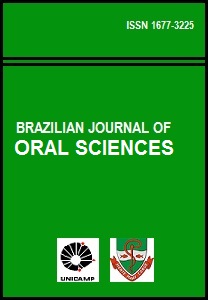Abstract
The purpose of this study was to evaluate the prevalence of malocclusion in a Brazilian schoolchildren population in the mixed dentition, assessing its relationship with early tooth loss. The study population consisted of 1,014 7-11-year-old children of both genders, with low socioeconomic backgrounds and multiracial characteristics, living in the city of Jequié, in the Northeast region of Brazil. The clinical examination was carried out by an adequately calibrated orthodontist in the children’s classrooms. Data were analyzed statistically by either chi-square or Fisher’s exact test (a=0.05). Angle’s classification revealed that 22.3% of the population had normal occlusion. Class I malocclusion was observed in 47.6%, Class II division 1 in 21%, Class II division 2 in 0.9% and Class III in 8.2% of the children. Excluding the subjects (n=199) with early tooth loss, which is a condition that can modify malocclusion status, the distribution was as follows: Class I (36.2%), Class II division 1 (17.5%), Class II division 2 (0.7%) and Class III (3.7%). Early tooth loss was more commonly observed in boys (Class I, Class III left side, and both sides simultaneously). Anterior crossbite was observed in 5.7% of the subjects, posterior crossbite in 8.4%, anterior and posterior crossbite simultaneously in 2.6%, open bite in 13% and crowding in 49.6%. In conclusion, Class I malocclusion was the most prevalent alteration. The occlusal pattern of Class III was more common than Class II division 2, among the examined individuals.The Brazilian Journal of Oral Sciences uses the Creative Commons license (CC), thus preserving the integrity of the articles in an open access environment.
Downloads
Download data is not yet available.

